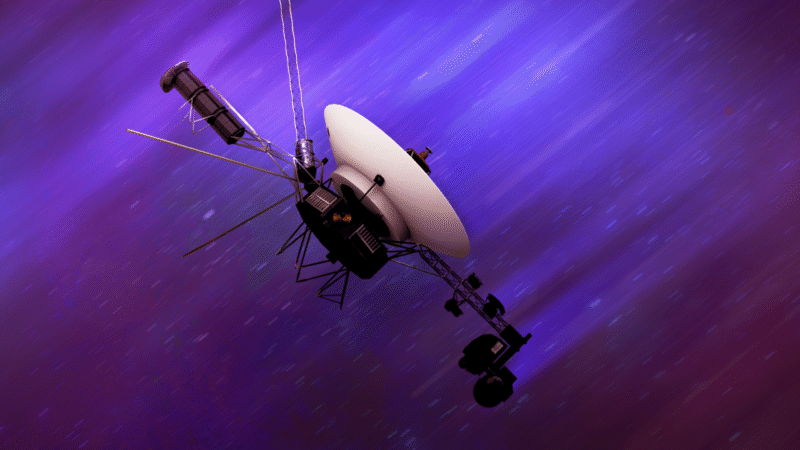Essential Insights
-
Thruster Revival: Voyager 1’s primary roll thrusters, inactive since 2004, were successfully revived, allowing for better control of the spacecraft’s orientation for ongoing missions.
-
Engineering Insight: Engineers identified a power supply issue with the thrusters’ heaters as the root cause for their failure; reactivating them was seen as essential for mission continuity.
-
Race Against Time: The team faced a significant urgency due to upcoming downtime of the Deep Space Station 43, crucial for communication, necessitating swift action to test the revived thrusters.
-
Successful Test: On March 20, engineers confirmed the success of their revival efforts when they observed a dramatic temperature increase in the thruster heaters, boosting mission optimism and morale.
NASA Revives Voyager 1 Backup Thrusters Ahead of Command Pause
NASA’s Voyager 1 spacecraft has reignited its backup thrusters, a significant achievement that boosts mission capabilities. This update comes as the team prepares for a temporary command pause due to antenna upgrades in Australia.
The backup roll thrusters had been vital since the primary ones failed in 2004. Engineers initially accepted this limitation, relying on the backups to manage the spacecraft’s orientation. However, without roll control, potential mission risks increased, prompting a re-evaluation of the 2004 failure.
Engineers speculated that a change in the circuits controlling the heaters could have been at fault. If they could restore power to these heaters, they might re-enable the primary roll thrusters. This strategy would allow for flexibility during the upcoming period when communication might be limited.
The plan required precise timing. If the star tracker tilted too far from its target while the dormant thrusters activated, it could result in a costly error. The team faced additional urgency, as the Deep Space Network’s DSS-43 antenna would be offline for upgrades between May 2025 and February 2026.
The upgrades are crucial for future lunar missions and improving communication with deep-space science projects. Despite past downtimes, the Voyager team prepared thoroughly for this upcoming challenge, making the thruster revival a priority ahead of the communication gap.
On March 20, the team successfully executed commands to heat the thrusters. They waited anxiously as signals took over 23 hours to reach Earth. When they observed the heaters’ temperature rise, jubilation erupted among the team. This moment underscored the innovative spirit that keeps Voyager alive, with engineers utilizing creative problem-solving to extend the spacecraft’s operational life.
Both Voyager 1 and Voyager 2 continue to provide invaluable data from nearly 15 billion and 13 billion miles away, respectively. Their insights from interstellar space enhance our understanding of the universe and inspire future technology developments.
For more information about NASA’s Voyager mission, visit https://science.nasa.gov/mission/voyager.
Discover More Technology Insights
Dive deeper into the world of Cryptocurrency and its impact on global finance.
Discover archived knowledge and digital history on the Internet Archive.
SciV1

